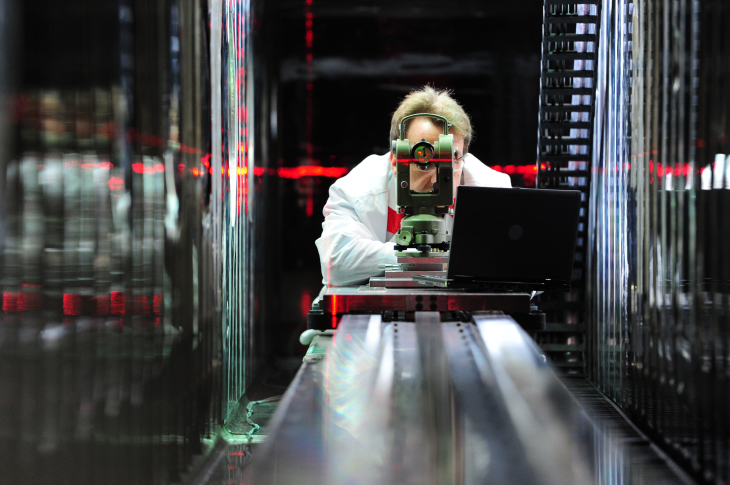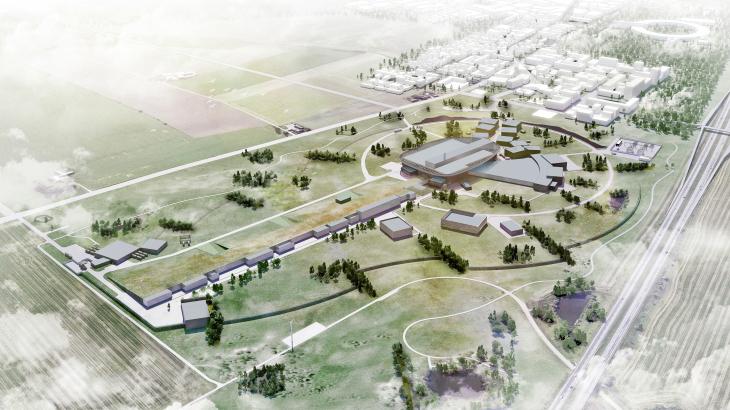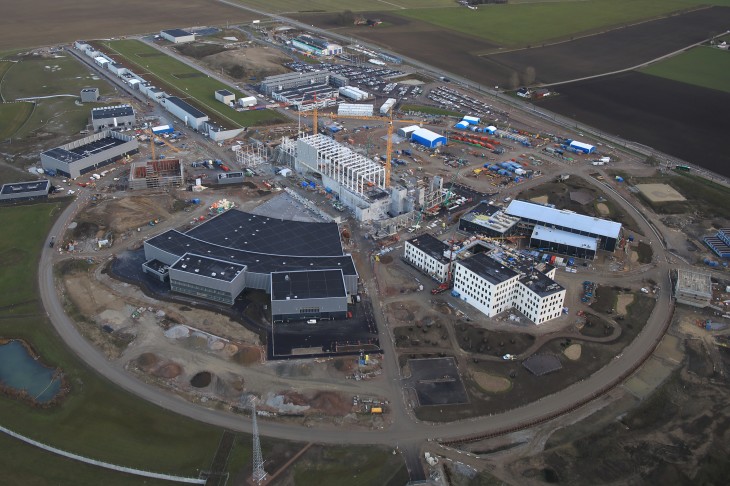Closure of research reactors
Three neutron science research reactors in Europe have ceased operations in 2019. The League of advanced European Neutron Sources, LENS, and the European Neutron Scattering Association, ENSA, warn of a “neutron gap” that could impact scientific research across multiple fields in physics, materials science, chemistry, biology, medical science and engineering. Together, LENS and ENSA are working on a new vision to maintain Europe’s leading position in neutron science.

Engineer at the research neutron source Heinz Maier-Leibnitz (FRM II) of TU Munich adjusting his measuring instrument. Photo: FRM II / TUM
Neutrons are unique and have a half-century legacy of socio-economic impact in Europe. Fifty percent of neutron science publications globally are attributed to European researchers from academia and industry, working at European neutron sources. Neutrons record, for example, the interior dynamics of lithium-ion batteries, reveal obscured minutiae from ancient artefacts or clarify the mechanisms of antibiotic resistance in bacteria. Cancerous tumours are treated with radiopharmaceuticals produced with neutrons. Neutrons are also critical for industrial and engineering researchers developing more efficient fuel cells for electric vehicles or testing stress and strain during the manufacturing of carbon-free steel.
Three European research reactors central to the decades of success in the European neutron landscape were shut down this year: Orphée, used by the Laboratoire Léon Brillouin (LLB) near Paris, BER II at the Helmholtz-Zentrum Berlin, and JEEP II operated by the Institute for Energy Technology outside Oslo,. Each of these reactors operated as a national facility primarily serving researchers in France, Germany and Norway, but also hosted scores of international researchers through trans-national access programmes. Each was closed for reasons unique to its national research agenda.
New European neutron source ESS under construction

Visualisations of the completed European Spallation Source, which is under construction in southern Sweden. ESS will host its first scientific users in 2023. Photo: Team Henning Larsen
A new European neutron source, the European Spallation Source (ESS), based on spallation rather than reactor technology, is currently under construction in southern Sweden. It will not be available to scientific users until 2023, however, and will take several years to ramp up to full capacity. Meanwhile, the 2019 reactor closures leave Germany’s FRM II in Garching and the 50-year-old ILL in Grenoble, France, as the last major neutron research reactors in their respective countries.
Christiane Alba-Simionesco, former director of LLB and chair of ENSA, says: “The European neutron user community is in a paradoxical, even schizophrenic situation. We must prepare the current and next generation of users to make the best use of what will be the most powerful source in the world, ESS, while on balance we are facing considerably reduced access to instruments in Europe. This could result in a neutron gap. It’s a simple fact that a reduction in the number of facilities, the number of instruments and the number of operating days at European facilities naturally limits the size of the user community and its scientific contribution to societal challenges. Meanwhile, neutron user associations around the world have made it clear that there is increasing interest in the use of neutron scattering throughout academia and industry.

The European Spallation Neutron Source is currently being built in southern Sweden. It expects the first visiting scientists in 2023.
Photo: Perry Nordeng/ESS
Helmut Schober, LENS chair and director of Europe’s flagship neutron facility, the Institut Laue-Langevin (ILL) says: “European neutron science owes its outstanding performance over the last 50 years largely to the close-knit network of facilities available to scientists. The three reactors closed in 2019 were all vital pillars of this network, in particular BER II in Berlin and Orphée in Paris, which both ran extensive international user programmes. Fortunately, significant steps have already been taken to prepare for these closures. ESS is well on its way, while the remaining major European sources have invested heavily into upgrading their capacities and capabilities. In addition, LLB will maintain its neutron activities by engaging in strong collaborations with other facilities and the future ESS. Provided we can maintain the proper level of support, Europe can expect to retain its world-leading position.”
The League of advanced European Neutron Sources (LENS)
The League of advanced European Neutron Sources (LENS) has the not-for-profit purpose of promoting cooperation and projects between European-level neutron infrastructure providers that offer a transnational user programme. The individual members remain independent but together through LENS join forces to support and strengthen European neutron science by creating an effective, collaborating ecosystem of neutron facilities. The nine facilities comprising LENS can be found here.
The European Neutron Scattering Association (ENSA)
Die European Neutron Scattering Association (ENSA) hat 7000 registrierte Mitglieder aus 21 verschiedenen Ländern. Sie sind für weltweit die Hälfte des wissenschaftlichen Outputs an Neutronenforschung verantwortlich. Zu den europäischen Ländern, die in ENSA vertreten sind, gehören Belgien, Dänemark, Deutschland, Estland, Frankreich, Griechenland, Großbritannien, Irland, Italien, die Niederlande, Norwegen, Österreich, Polen, Rumänien, Russland, Schweden, die Schweiz, Slowakei, Spanien, die Tschechische Republik und Ungarn.
Recent examples of research using neutrons in Europe:
- Neutrons for organic solar energy technologies (ISIS Neutron and Muon Source, Großbritannien)
- Neutron experiments reveal proteins which can inhibit amyloid plaque formation (Institut Laue-Langevin, Frankreich)
- Giftig, aggressiv und doch viel genutzt (Heinz Maier-Leibnitz Zentrum, Deutschland)
- Neutrons for building a car (Budapest Neutron Centre, Ungarn)
- Future Science: What will we see at ESS? (European Spallation Source, Schweden)
- Zufall hilft Forschern (Forschungszentrum Jülich, Germany)
- Successful demonstration of neutron scattering as a characterization method for battery materials – silicon nanoparticles (Institute for Energy Technology, Norwegen)
- Membrane interaction of off-pathway prion oligomers and lipid-induced onpathway intermediates during prion conversion: A clue for neurotoxicity (Laboratoire Léon Brillouin, Frankreich)
- Eine Hand wie keine zweite (Paul Scherrer Institut, Schweiz)
About the Research Neutron Source FRM II
The Heinz Maier-Leibnitz Zentrum (MLZ) represents the cooperation of Technische Universität München and three research centers of the Helmholtz Association, namely Forschungszentrum Jülich, Helmholtz-Zentrum Geesthacht Zentrum für Material- und Küstenforschung (HZG) and Helmholtz-Zentrum Berlin für Materialien und Energie (HZB, dormant partnership) for the scientific use of the Heinz Maier-Leibnitz Research Neutron Source (FRM II) in Garching near Munich. This cooperation is financially supported by the Federal Ministry of Education and Research (BMBF) and the Bavarian State Ministry of Education and Cultural Affairs, Science and the Arts. This cooperation will create a world-leading centre for research with neutrons and positrons.
Further information can be found on the
pages of the MLZ
